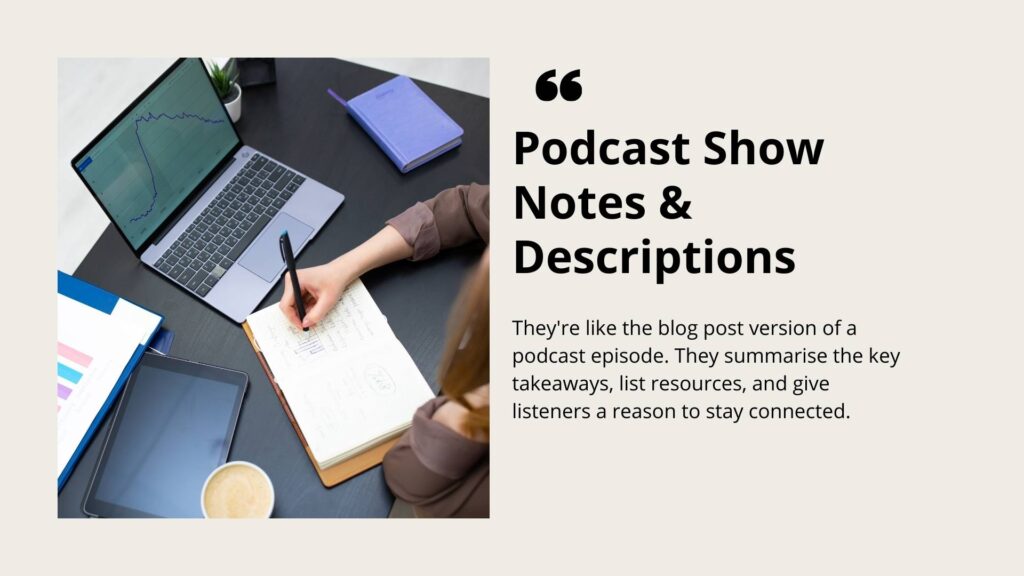I still remember my first gig as a content writer.
It was for a quirky online tea shop, and they asked me to write a blog. Simple, right? Until I found myself deep in Google searches like, “What’s the difference between blog writing and copywriting?” and “Why does everyone suddenly need SEO?”
That’s when I realized—content writing isn’t just one thing.
It’s a whole universe of styles, tones, and goals. One day, you’re writing an emotional story that tugs at the heartstrings, and the next, you’re preparing a sharp copy meant to sell a product in five words or less.
And just like that, there are 13 types of content writing. Some of most common & uncommon types are,
What? Are you hearing some of the names for the 1st time? Wait, wait, don’t get hyper. I was at your place, too. That’s why I am here to help you guys out.
13 Types Of Content Writing With Examples
After spending 3 years as a content writer, I realized that ‘content writing isn’t just about filling space. It’s about creating impact, one word at a time.’
There are many forms of content writing also. Each of them can bring you money if you use them the right way. Here are my 13 favorite types of content writing,
Seo Writing
SEO writing stands for Search Engine Optimization writing. In simple words? You write content that’s helpful to readers and makes Google go, “Oh wow, this is what people are looking for!” 👀
So, instead of writing blindly, you write with a purpose. So that your content will rank like this,
You choose a topic people are actually searching for, add keywords they’re typing into Google, and format the content in a way that’s easy to read—both for humans and search engines.
Here’s how I usually do it:
- I start by researching keywords using tools like Ubersuggest or Ahrefs
- Then I look at what’s already ranking (that’s my competition 👀)
- I write more helpful, clear, and valuable content than what’s out there.
- I naturally sprinkle in those keywords, but I never force them.
- And finally, I format it nicely—use headings, short paragraphs, bullet points, etc.

How much can you earn?
You might make $20–$50 per blog post if you’re just starting. But once you gain experience and results?
- SEO freelancers charge $100–$500+ per article
- Agencies pay $0.10–$0.25 per word
- Long-term SEO content gigs can bring in $2,000+ per month.
And if you build your own blog using SEO skills?
You could earn from ads, affiliate links, and products. Yes, passive income—while you sip coffee and let Google do the work. ☕✨
So yeah, SEO writing isn’t just a “writing job”—it’s a skill that can seriously grow your career and bank account.
Content strategy
Let’s be honest: writing without a strategy is like baking a cake with no recipe… might turn out okay, but most of the time, it’s just a hot mess. 😅
That’s where content strategy comes in. It’s not about what you write; it’s about why, for whom, and how you write it to actually get results.

So, what exactly is Content Strategy?
It’s the planning process behind your content. You figure out:
- Who you’re writing for (your audience)
- What kind of content do they need (educational, entertaining, problem-solving)
- Where to post it (blog, social media, newsletter?)
- When to post (yup, timing matters!)
- And how it relates to your goals (traffic, leads, sales, etc.)
Basically, content strategy makes sure you’re not just throwing content into the void. Every piece has a purpose. 🎯
Here’s how I approach it (and you can too):
- Know your audience – stalk their problems, questions, comments online 👀
- Set a goal – are you writing to get traffic, build trust, or sell something?
- Choose content types – blogs, videos, emails, carousels… what fits best?
- Plan a calendar – trust me, a content calendar saves so many headaches
- Measure & tweak – use data (Google Analytics, socials) to see what’s working
What can you earn from content strategy work?
If you get good at this—and I mean really good—you’re not just a writer anymore. You’re a strategist. And that’s where the big bucks come in.
- Freelance content strategists charge $500–$5,000+ per project
- Monthly retainers can be $1,000–$3,000+
- Agencies will love you if you can bring results with a plan
And if you combine content strategy with SEO writing? You’re basically unstoppable.
Ad Copy Writing
Have you ever scrolled through Instagram, seen an ad, and next thing you know, you’re 3 clicks deep and buying something you didn’t even know you needed?
Yep, that’s the power of ad copywriting. It’s short, snappy, and makes people act—whether it’s buying, signing up, or clicking through.
What is Ad Copywriting?
Ad copywriting is writing words (a.k.a. copy) that sell. But it’s not just about screaming Buy Now!. It’s about tapping into emotions, desires, or pain points in a way that connects fast. You’ve got just a few seconds to grab attention, so every word has to earn its place.

We’re talking:
- Facebook & Instagram ads
- Google Ads
- YouTube bumper ads
- Sales banners
- Landing pages
- Product descriptions with ✨spice✨
How I learned it (and how you can too)
At first, I thought I had to be clever or overly creative. Nope.
What really works?
Clarity + emotion + benefit.
Here’s my basic formula:
Hook + Problem + Solution + CTA (Call to Action)
Example:
Do you hate wasting time cooking after work? Try our 15-minute meal kits. They’re fresh, fast, and foolproof. Order now and get 30% off!
Boom. Clear problem. Quick fix. Tempting deal.
How much can you earn with Ad Copywriting?
Once you master this, you’re golden. Businesses need ad copywriters who can convert.
- $50–$200 per ad (for beginners!)
- $500–$2,000+ for full ad campaigns
- Some pros charge $3,000+ for just ONE landing page with killer copy
And if your words bring in sales? You can even negotiate performance bonuses. (Yes, passive income for being persuasive 👀)
Scriptwriting
Okay, so imagine this: You’re sipping your coffee, watching a YouTube video or scrolling through a brand’s Instagram reel, and you think, “Wow, this is so relatable!” Chances are, a scriptwriter is behind that magic.
So, What Is Scriptwriting?
Scriptwriting is writing content meant to be spoken, not just read. Whether it’s a YouTube video, TikTok skit, podcast, explainer video, or even a brand ad—every single line you hear was planned, written, and re-written by a scriptwriter.

It’s all about tone, timing, and talking like real people do.
How I Got Into Scriptwriting
Honestly? I just started writing for YouTubers one day. Wrote a fun intro here, a cheeky joke there… then boom—people started asking for more.
And that’s when I realized:
writing for the screen is half storytelling, half psychology. You have to hook them, make them feel something, and keep them watching (or listening) till the end.
Here’s my formula:
Hook 🎯 → Relatable moment → Build-up → Payoff → CTA
And yes, humor + emotion = gold.
How Much Can You Make?
Get ready because scriptwriting pays well—especially in video marketing and YouTube.
- $100–$500 per script (for YouTube creators)
- $1,000+ for branded video campaigns
- $50–$150 per minute for explainer video scripts
- $5,000–$15,000 if you ever land commercial or film scripts (it happens 👀)
If you hear the dialogue in your head (don’t worry, the creative kind 😅), love storytelling, and want to blend creativity with performance, scriptwriting is such a vibe.
Wanna try writing your first script together? Just say the word, and we’ll make magic on the page!
Social Media Writing
Let’s be honest: people scroll fast. Like, blink-and-it’s-gone fast. So, if your post doesn’t grab attention in the first 2 seconds? Buh-bye. That’s where social media writers come in—to stop the scroll and spark connection.
So, What Is Social Media Writing?
It’s writing short, snappy, engaging content specifically for platforms like Instagram, Twitter/X, Facebook, LinkedIn, TikTok, and even Pinterest. You’re the brand’s voice online, from captions to threads, stories to reels.
Just like this,
You write like a human, not a billboard.
Think: relatable, funny, bold, emotional, or even controversial—whatever works for that brand’s vibe.
How Much Can You Make?
You’d be surprised how in-demand this skill is. Companies and creators always look for someone to help them go viral (or at least not flop).
- $15–$50 per caption (freelance gigs)
- $500–$1,500+/month managing a small brand’s content
- $2,000–$5,000/month for full-scale strategy + writing for bigger brands
- Even $100+ per tweet if you’re ghostwriting for influencers 👀
If you love words, trends, and creating vibes with just a few lines—social media writing might just be your thing.
Plus, there’s nothing like seeing your post blow up and thinking: “Yeah, I wrote that.”
Wanna try writing some captions together next?
Technical Writing
In short: it’s the art of explaining complex stuff simply. You take something super technical—like software, machinery, medical tools, or even data processes.
And break it down so the average person (or a confused newbie) can understand and use it without feeling like they need a PhD.

It’s not about sounding intelligent. It’s about making others feel smart.
Think: manuals, FAQs, API docs, troubleshooting guides, installation instructions, white papers, etc.
How Do You Do It?
Here’s the fun (and slightly nerdy) part:
- Understand the product first. You can’t explain what you don’t get.
- Talk to engineers, developers, or experts – they’ll give you the core info.
- Organize it clearly – step-by-step, logical flow, clean headings.
- Write in plain English – no jargon overload.
- Add visuals – diagrams, screenshots, videos help A LOT.
This field is gold if you’re good at asking questions, staying curious, and love clarity.
What Can You Earn?
Spoiler: technical writing pays well, mainly because not everyone wants to do it.
- Beginner freelancers: $25–$50/hr
- Experienced tech writers: $70–$100/hr
- Full-time jobs: $60k–$120k+/year
- Niche writers (like API docs or software manuals) often go higher 💼
If you read the manual (or at least secretly appreciate it when one exists), technical writing could be your calling. It’s like translating between the tech world and the real world.
Press Releases
Imagine you’ve launched a new product, hosted an event, hit a major milestone, or hired someone important. You want to tell the world, but not in a casual Instagram post—you need something formal, clear, and media-friendly.
That’s where press releases come in.
So, What’s a Press Release?
A press release is a short, structured news story written by you (or a content writer like us) and sent to the media. It’s like a public announcement giving journalists the facts they need to turn your story into news coverage.
You’re basically saying:
“Hey reporters, this is newsworthy. Wanna talk about it?”
How I Got Into It (And How You Can Too)
I wrote my first press release for a local business launching a new app. I followed the classic structure:
- Headline – Catchy but professional
- Lead paragraph – The “what, who, when, where, why”
- Body – More details, quotes, context
- Boilerplate – A quick company bio
- Contact info – Who to call for more
The trick? Write like a journalist would. Keep it factual, avoid fluff, and format it cleanly. No emojis here. 😉
How Much Can You Earn Writing Press Releases?
Press release writing is a sweet spot for freelancing. You don’t need to be overly creative—just clear, concise, and structured.
- $100–$300 per press release (freelance)
- $500+ for press release + distribution
- Agencies often pay $1,000–$2,000 for high-level corporate releases.
And the best part? Writing one usually takes 1–2 hours once you know the formula.
Press releases are gold if you love writing but prefer a professional tone (or want to write for brands and businesses).
Copywriting
Copywriting is the art of persuasion in words. It’s writing that sells without sounding like it’s selling.
It could be a headline, a product description, a sales page, a social media caption, or even an email—anything designed to compel the reader to take action.
Unlike your average blog post that informs or entertains, copywriting is more like whispering to your reader’s brain:
“Hey… you know you want this.” 😏
When I first started, I thought copywriting meant being super “salesy.” But nope. It’s more like solving a problem in a natural and helpful way.
The core ingredients of good copywriting?
- Clarity over cleverness
- Emotions that speak directly to the reader
- Benefits over features
- A clear call to action
Whether it’s “Buy now,” “Sign up,” or “Learn more,” your words should gently (or sometimes boldly!) nudge people toward that next step.
Where You’ll Use Copywriting
Here’s where copywriting shows up:
- Website homepages
- Landing pages
- Emails & newsletters
- Social media ads
- Product pages
- Video scripts
- Sales funnels
And What About the Money?
Now we’re talking. Copywriters are in serious demand.
- Beginners can earn $30–$100/hour
- Freelancers charge $150–$500+ per page
- Experts can make $3,000+ for one high-converting sales page
- Some copywriters even earn royalties or performance bonuses when their words bring in $$$
If you’re good at understanding what people need—and writing in a way that makes them trust you—you can seriously thrive in this field.
Newsletters
Let me tell you, I used to ignore newsletters completely. Then, one day, I subscribed to a writer’s list just to be polite… and I couldn’t stop reading.
It felt like catching up with a friend over coffee—but via email. That’s the magic of a good newsletter.
So, what exactly is a newsletter?
It’s a regular email sent out to your subscribers—whether daily, weekly, or monthly. The goal? Build a connection, share updates, and offer value. It could be:
- Tips and advice
- Product launches
- Personal stories
- Curated links
- Exclusive deals
Basically, it’s content + personality + purpose, all wrapped up in one nice little scroll.
How do you write one?
Here’s how I break it down:
- Start with a hooky subject line (This is your “open me!” moment)
- Talk like a human. Tell a quick story or share something real.
- Give value—maybe a tip, a product, or a fun recommendation.
- End with a CTA (even if it’s just “Hit reply and say hi!”)
It’s like a mini blog post but more intimate.
And the money part?
If you build a good list and write solid newsletters, the income can be sweet:
- Freelancers charge $50 to $500+ per newsletter
- Ongoing gigs with brands pay $1,000–$3,000/month for weekly sends.
- Or you could start your newsletter and monetize with sponsors or paid subscriptions (think Substack—some writers make 5-figures/month 👀)
So, if you love writing casually, telling stories, and offering helpful nuggets, newsletter writing might just be your next gig. And trust me, there’s always someone out there waiting for a fun email that isn’t just another coupon code. 😉
Email Writing
You know those emails that make you smile, click, or even hit “reply”? That’s what good email writing does. And once I figured it out, it became one of my favorite writing gigs.
So… What is Email Writing?
Email writing is exactly what it sounds like—writing emails! But we’re not talking boring corporate memos. I mean engaging, strategic emails sent out to a business’s audience.
Whether it’s a product launch, a welcome sequence, or a weekly newsletter—it’s all about building trust and driving action.
Types of emails I love writing:
- 💌 Welcome emails – “Hey! Glad you’re here. Let me show you around.”
- 🔄 Nurture emails – Sharing value to build a connection.
- 🛒 Sales emails – “Here’s why this product is perfect for you.”
- ⏰ Cart abandonment emails – A gentle nudge: “Hey, you forgot something 😉”
- 🗞️ Newsletters – Regular updates, value bombs, and personality-packed messages.
How I Do It
I keep 3 things in mind:
- Subject line: It has to be scroll-stopping. If it doesn’t open, it doesn’t matter how good the rest is.
- Conversational tone – No stiff or robotic vibes. Just like I’m talking to a friend (a smart, curious one).
- Clear CTA – Always tell the reader what to do next. One email = one purpose.
Here’s a mini example:
Subject: This little tip helped me write faster
Hey [First Name],
Just wanted to share a trick I found that doubled my writing speed (no exaggeration). It’s all about blocking time like a boss.
Wanna try it? I put together a quick guide here. 👇
[Download Now]
Talk soon,
[Your Name]
Boom. Casual, helpful, and to the point.
How much can you earn with email writing?
Email copywriters are in demand—because email still converts like crazy.
- $50–$150 per email (freelancer rates)
- $500–$1,500+ for a 5-email sequence
- Monthly newsletter packages? Cha-ching. Think $300–$2,000/month depending on volume.
And once you get good at writing high-converting emails? You’re printing money for clients, meaning they’ll pay you more too.
Podcast Show Notes & Descriptions
Imagine someone just listening to an amazing podcast episode. They laughed, they learned, and they’re pumped.
But now they want more—links, tips, guest info, maybe even that cool quote they heard?
That’s where show notes come in.
They’re like the blog post version of a podcast episode. They summarise the key takeaways, list resources, and give listeners a reason to stay connected.
On the other hand, the description is the short blurb that pops up on Spotify, Apple Podcasts, etc. It gives people a sneak peek into the episode and entices them to hit play.

How Do I Write Them?
Here’s how I like to do it:
- Listen to the full episode – yep, no shortcuts!
- Write a catchy intro – tease the value, hook the reader
- Break down the episode – bullet points, timestamps, key quotes
- Add links – guest bios, mentioned tools, social links
- Include a call-to-action – “Subscribe, rate, or DM us!”
- Keep the description short & snappy – think 2–4 sentences max
It’s part summary, part marketing, and a lot of clarity.
How Much Can You Earn?
This one’s pretty sweet for writers who love audio content.
- Per episode: $25–$150+ (depending on length & depth)
- Retainers: $300–$1,000/month for consistent podcasts
- Add SEO and formatting skills? Even more 💸
It’s also great if you’re into repurposing—show notes can turn into blog posts, emails, carousels, you name it.
AI Prompt Engineering + Content Training Docs
“Okay, so you talk to robots for a living now?”
That’s what my cousin said when I told her I do AI prompt work. 😂
But here’s the truth—AI prompt engineering and training docs are the secret sauce behind smart AI content. And yes, people pay real money for it.
What is AI Prompt Engineering?
Prompt engineering is basically the art of talking to AI tools (like ChatGPT) in a way that gets you the exact output you want. It’s like giving crystal-clear instructions to a super fast, slightly clueless assistant.

You don’t just say, “Write a blog post.”
You say:
“Write a 500-word SEO blog post in a fun, conversational tone for beginners who want to learn embroidery. Add a bulleted list and FAQ section.”
It’s all about being super specific—tone, structure, audience, format.
What Are Content Training Docs?
Now, content training docs take it up a notch. These detailed guides teach an AI system (or a team of writers) how to create content that matches your brand or project. Think of them as the rulebook for tone, style, format, voice, and even do’s and don’ts.

They usually include:
- Target audience details
- Tone of voice instructions
- Example prompts & ideal responses
- Style guides (grammar rules, formatting, etc.)
- Bad vs good content examples
Training docs are super helpful for teams using AI in different content types, such as blogs, scripts, social posts, FAQs, and product descriptions.
How Do You Do It?
Here’s how I usually break it down:
- Understand the goal – What do you want the AI to do? What content are you creating?
- Research the tone + audience – This helps you write better prompts and structure the doc.
- Write & test prompts – Iterate and improve. Keep tweaking until the AI nails it.
- Create examples – Add good and bad samples so there’s no confusion.
- Package it all in a clean doc – Something clients or teams can easily follow.
How Much Can You Earn?
This is a HOT skill right now. Companies are scrambling to streamline content creation with AI but don’t know how to talk to it properly. That’s where you come in.
- Prompt engineers can earn $50–$200/hr or more
- Training docs for brands range from $500–$2,000+ depending on complexity
- Some tech startups even hire full-time at 6-figure salaries just for this
Not bad for knowing how to “talk to robots,” huh?
Microcopy
Ah, microcopy—that tiny little writing that quietly does all the heavy lifting. 😌
Let me explain it in a chill, storytelling tone, like we’re sipping coffee and talking shop:
So, What Is Microcopy?
Microcopy is the small text you see on websites, apps, or digital products that helps users navigate, understand, and take action.

We’re talking:
- Button labels: “Try it free”, “Yes, I’m in!”
- Form hints: “Password must be 8+ characters”
- Error messages: “Oops! That email doesn’t look right.”
- Loading screens: “Hold tight, your magic is loading…”
- 404 pages: “Lost? Let’s get you back home.”
It’s not just words. It’s vibes + clarity + trust, all in a few syllables.
How Do You Write Microcopy?
Here’s the trick:
🔸 Keep it clear – say what’s needed in the fewest words
🔸 Make it human – no robotic jargon, use natural language
🔸 Match the brand tone – playful, serious, quirky, whatever fits
🔸 Think UX-first – guide the user, reduce confusion, create flow
I usually imagine I’m writing for a wise friend who’s in a hurry but still appreciates a warm nudge.
Can You Make Money With Microcopy?
Absolutely.
Startups, SaaS companies, and product design teams love a good microcopy writer because it improves user experience (which = higher conversions).
- Freelance gigs: $50–$150/hr
- Website/app projects: $300–$2,000+
- Full-time UX writing roles: $70k–$120k+ annually
Plus, microcopy is in almost every digital product—so the demand? Constant.
Final Thought
That’s how many types of content writing I tried so far, and I love it. Cause it brings $$🤑 yes,, writing words can get you money. If you write with some strategy.




